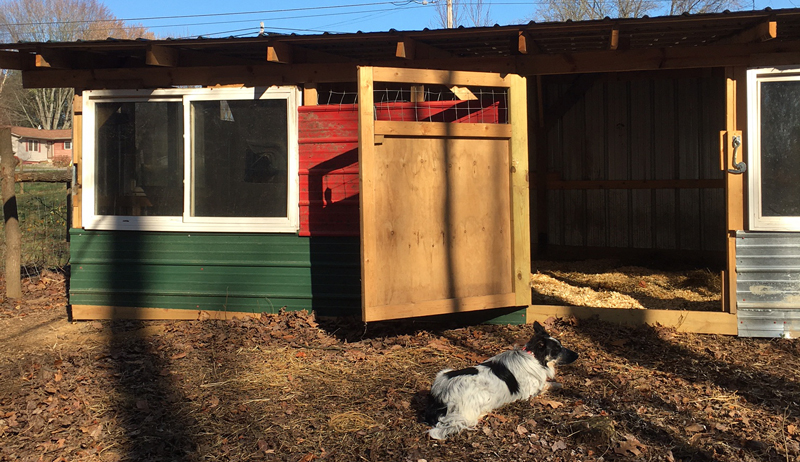
In spite of the crazy up and down temperatures in October and early November this year, I’ve started preparing my livestock (and myself) for a plunge in temperatures as winter sets in.
I’ve learned through trial and error that it’s smart to clean out the barns and test stock tank heaters BEFORE you need them! There’s nothing worse than going out the first morning after you plug your tank heater in to find out that it’s frozen in 3 inches of ice.
In many ways, winter weather is not as hard on sheep as hot, humid summer days. Yet, many people worry about their livestock more as the weather cools down.
Granted, there are things you can and should do to ensure that your sheep stay healthy and happy over the winter. In my mind, the big three are shelter, water and food.
Shelter
Dry & Draft-Free
Sheep don’t need fancy or elaborate shelter in the winter. What they do need is a place to get out of the wind or rain or snow. Face your structure to the south if you can and block out the northerly winds.
The shelter can be a simple, three-sided shed or it can be a fully enclosed building. You can use an old chicken coop (we did when we only had five lambs) or any type of structure that gives the sheep some protection from the elements.
My husband built an adequate, dry, ventilated shed for our flock purely out of found materials, including some old windows that a neighbor was giving away.

If you do use a fully enclosed building, it’s important to make sure there is adequate ventilation so that humidity doesn’t build up when the sheep are inside. Moisture and ammonia can cause respiratory problems in sheep—think pneumonia and bronchitis.
And don’t even think about heating the building! Sheep—and even newborn lambs—are very cold tolerant s0 long as they have a dry, draft-free place to go.
Bedding is another issue. You need to make sure it offers some insulation if the sheep want it. You can use straw, hay, pine shavings, wood chips, peanut hulls or corn stalks.
One thing I don’t recommend for wool sheep is sawdust. The fine particles can get stuck in the wool and make a mess of a fleece if you shear for spinning.
My sheep are wool sheep, but we don’t shear for spinning, so I use a mixture of low-quality hay (cheaper than straw around here) and pine shavings. The pine shavings just smell better. Lambs do come running out in the morning with a few shavings on their wool, but they fall off before too long.
Read more: These 5 tips will help you prepare your gardem tractor for winter.
Water
The most necessary and hardest thing to provide in really cold weather
According to the Michigan State University Extension, the amount of water a sheep needs in the winter depends a lot on many things, such as:
- how much snow you have in your fields
- whether a ewe is at maintenance
- whether she is pregnant or even nursing
To me, one thing is clear: Always have a source of clean, unfrozen drinking water for your sheep. If the temperatures in your area go down to well below freezing, you may need to use a stock tank heater or some other way of keeping your water from turning to solid ice.
I’ve read that keeping milk jugs filled with salted water floating in the tank can keep it from freezing but have never tried that.
However, this year we have a pasture that is too far from an electrical source, so we will be trying a number of ways to keep water in our stock tank without electricity. We’re going to try building an insulated solar cover for our stock tank.
Read more: Check out these important tips for feeding your livestock during winter.
Feed
More energy needs only in the coldest weather
Last month I watched a webinar on managing winter housing for sheep and goats held by the Purdue University Extension. One fact I found interesting was that you don’t need to add extra feed or supplements until the temperature goes below what they called the “critical temperature” of 25 degrees F.
After that, they recommend adding a 1/4 pound of feed per sheep for every 10 degrees below 25.
Of course, you should always offer good quality hay and sheep minerals as well.
I’m feeling pretty good about winter plans for managing my flock. My one question will be how my water situation will work in a pasture far from my house—and electricity. I’ll let you know how my passive solar water tank project goes.
Given the uncertainty of the weather here in the Midwest, it will be an adventure of some kind!




